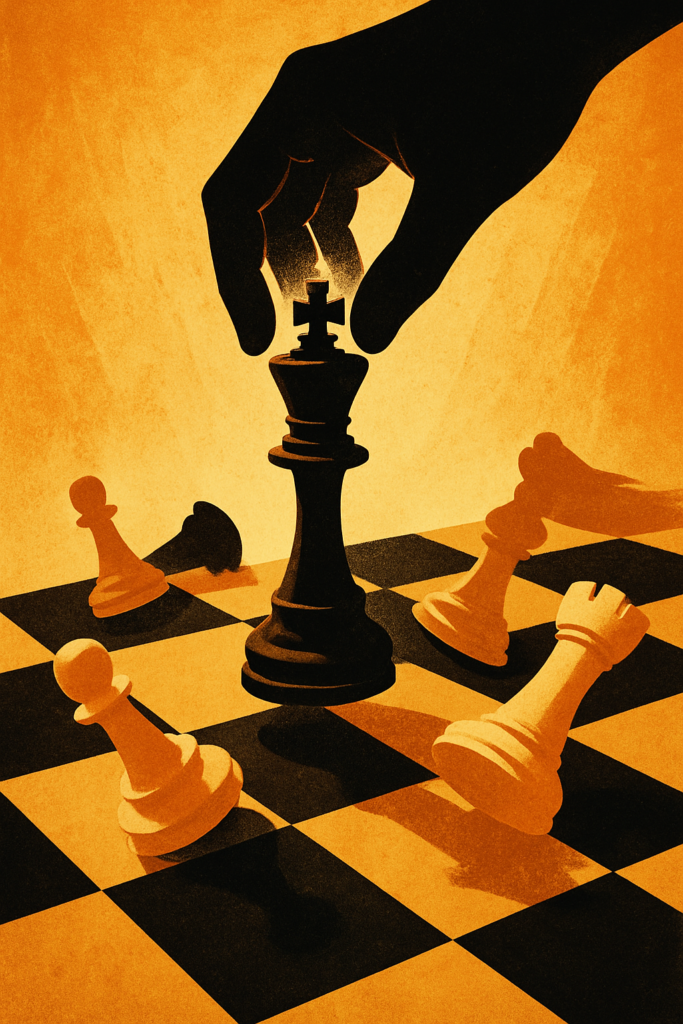In every group—whether a corporate team, a social circle, or even a political movement—there is usually a central figure holding it all together. It might be a charismatic leader, a loud dissenter, or a quietly influential player. But here is the truth: if you want to disrupt or redirect the flow of power, do not waste energy battling everyone. Go straight to the source.
When you remove or neutralize the key influencer, the group often loses its unity, drive, or purpose. The shepherd goes down—and the sheep scatter.

The Psychology Behind Group Dynamics
Groups thrive on leadership. Even informal ones look to someone for direction, validation, or rebellion. Take out that figure, and confusion sets in. Followers lose certainty. Momentum falters. The hierarchy collapses.
This principle plays out everywhere:
- In the office, one disgruntled team member can sway the entire department’s morale.
- In politics, one powerful voice can ignite or kill a movement.
- In families or friend groups, one dominant personality often sets the emotional tone for everyone else.
To gain control or restore balance, you must identify and address the source of influence—not the symptoms it creates.
Marcus Garvey: The Leader They Had to Remove
Marcus Garvey was a Jamaican-born Black nationalist and founder of the Universal Negro Improvement Association (UNIA). By the 1920s, he had become one of the most influential Black leaders in the world, advocating for racial pride, economic independence, and a return to African roots.
Garvey’s charisma and organizational power attracted millions of followers across the U.S., Caribbean, and Africa. His movement was not just ideological—it was economic and political. He founded the Black Star Line shipping company and created a broad, loyal network of people who saw him as a visionary leader.
But to the U.S. government, Garvey was dangerous—not because he was violent, but because he unified and mobilized a massive base of disenfranchised people. The man himself was the movement.

J. Edgar Hoover’s Strategy
As a young agent in the Bureau of Investigation (which would later become the FBI), J. Edgar Hoover saw Garvey as a direct threat to the status quo. Instead of taking on the UNIA broadly, Hoover focused his energy on discrediting and removing Garvey personally.
He launched surveillance operations, infiltrated the UNIA, and built a legal case against Garvey—not for his activism, but for mail fraud related to the Black Star Line. In 1923, Garvey was convicted and sentenced to five years in prison. Two years later, he was deported to Jamaica.
Once Garvey was removed, his movement quickly lost coherence and strength. Leadership fractured, internal disputes emerged, and the momentum was gone. The flock scattered without its shepherd.
How This Principle Applies Today
You do not have to be dealing with political empires to use this insight. The same logic applies in everyday environments.
In the Workplace
Every toxic culture has a central source. It could be a negative manager, a manipulative employee, or even an unofficial influencer. If you’re trying to fix the team without addressing that person, you are just treating symptoms. Remove or reassign the ringleader, and the dynamics can change overnight.
In Social Groups
Ever notice how some friend groups revolve around one dominant personality? If drama follows them, chances are it is not a coincidence. If you want peace, you may have to create distance—or help others see that their loyalty is misplaced.
In Organizations
Movements often rally around symbols and voices. If you are trying to redirect or dismantle a movement, neutralizing the voice at the centre—through discrediting, defunding, or outperforming—is more effective than arguing with the masses.
How to Apply This Wisely
- Identify the True Leader
Sometimes the real leader is not the one with the title. It’s the person others listen to, follow, or fear. Watch group dynamics closely—who sets the tone? Who shapes opinion? - Target Influence, Not Emotion
The goal is not revenge or aggression. It is strategy. You do not have to destroy someone’s life—you just need to remove or redirect their influence. - Replace the Power Source
If you are removing a leader, make sure there is someone ready to fill the void—ideally someone more aligned with your vision. Chaos without leadership often creates new problems. - Act Decisively
Half-measures rarely work. Once you know who the source is, act with clarity and resolve. Ambiguity only fuels resistance.
Final Thoughts: Cut the Root, Not the Branches
When problems persist in any group or system, look past the symptoms. Who benefits from the chaos? Who keeps the system alive—through charisma, fear, or loyalty?
To create real change, you do not need to fight everyone. You just need to strike the shepherd.
Because once the leader falls, the group loses direction—and that’s when transformation becomes possible.
